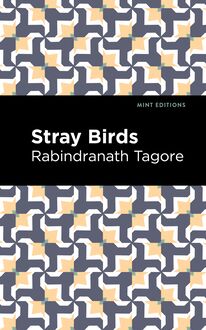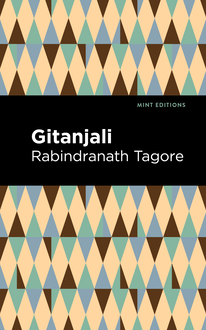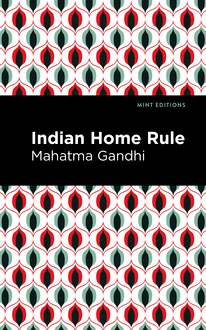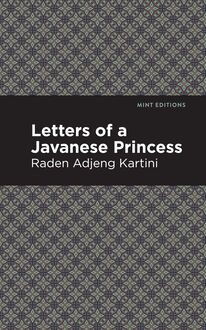-
 Univers
Univers
-
 Ebooks
Ebooks
-
 Livres audio
Livres audio
-
 Presse
Presse
-
 Podcasts
Podcasts
-
 BD
BD
-
 Documents
Documents
-
- Cours
- Révisions
- Ressources pédagogiques
- Sciences de l’éducation
- Manuels scolaires
- Langues
- Travaux de classe
- Annales de BEP
- Etudes supérieures
- Maternelle et primaire
- Fiches de lecture
- Orientation scolaire
- Méthodologie
- Corrigés de devoir
- Annales d’examens et concours
- Annales du bac
- Annales du brevet
- Rapports de stage
La lecture à portée de main
Vous pourrez modifier la taille du texte de cet ouvrage
Découvre YouScribe en t'inscrivant gratuitement
Je m'inscrisDécouvre YouScribe en t'inscrivant gratuitement
Je m'inscrisEn savoir plus
Vous pourrez modifier la taille du texte de cet ouvrage
En savoir plus

Description
Tales of the Punjab (1894) is a collection of stories translated and collected by Flora Annie Steel. Collected while Steel lived with her husband in the north of the Indian subcontinent, Tales of the Punjab was a successful introduction to legends and stories from the Punjab region for children and adults back home in England. Published while India remained under the control of the British Empire, Steel’s collection puts a decidedly Western twist on the stories she learned from local women while advocating for education reform. In a village in the Punjab, as the sun sets on an exceedingly hot day, the local people return from the fields to prepare dinner and settle down for the evening. As they await the cooling winds of midnight in order to sleep outside, the villagers gather around a local storyteller. Possessing a wide knowledge of legends, tales, and history, he calmly begins to speak to his gathered audience. “Sir Buzz” is the story of a woman and her son who are left in dire poverty following the death of her husband, a soldier. Although young, the boy dreams of setting out into the world in order to bring something home for his mother. Finding six shillings in the pocket of an old coat, he leaves his home only to run into an injured tigress. Unable to remove a thorn from her paw, she asks the boy for his assistance, and offers him a mysterious reward. In “The Rat’s Wedding,” a rat takes shelter underground during a steady rainstorm. In his digging, he discovers a root, which he takes with him on his journey homeward once the rain subsides. Looking forward to using the root for himself, he encounters an old man struggling to light a fire with wood soaked through with rain. Exchanging his root for a piece of food, the generous rat continues on his way. Tales of the Punjab is a collection of forty-three instructive, humorous, and authentic stories translated by Flora Annie Steel. With a beautifully designed cover and professionally typeset manuscript, this edition of Flora Annie Steel’s Tales of the Punjab is a classic of Anglo-Indian literature reimagined for modern readers.
Sujets
Informations
| Publié par | Mint Editions |
| Date de parution | 21 mai 2021 |
| Nombre de lectures | 0 |
| EAN13 | 9781513285078 |
| Langue | English |
| Poids de l'ouvrage | 1 Mo |
Informations légales : prix de location à la page 0,0500€. Cette information est donnée uniquement à titre indicatif conformément à la législation en vigueur.
Extrait
Tales of the Punjab
Flora Annie Steel
Tales of the Punjab was first published in 1894.
This edition published by Mint Editions 2021.
ISBN 9781513280059 | E-ISBN 9781513285078
Published by Mint Editions ®
minteditionbooks.com
Publishing Director: Jennifer Newens
Design & Production: Rachel Lopez Metzger
Project Manager: Micaela Clark
Typesetting: Westchester Publishing Services
C ONTENTS P REFACE T O THE L ITTLE R EADER S IR B UZZ T HE R AT’S W EDDING T HE F AITHFUL P RINCE T HE B EAR’S B AD B ARGAIN P RINCE L IONHEART AND HIS T HREE F RIENDS T HE L AMBIKIN B OPOLÛCHÎ P RINCESS A UBERGINE V ALIANT V ICKY, THE B RAVE W EAVER T HE S ON OF S EVEN M OTHERS T HE S PARROW AND THE C ROW T HE T IGER, THE B RAHMÂN, AND THE J ACKAL T HE K ING OF THE C ROCODILES L ITTLE A NKLEBONE T HE C LOSE A LLIANCE T HE T WO B ROTHERS T HE J ACKAL AND THE I GUANA T HE D EATH AND B URIAL OF P OOR H EN-SPARROW P RINCESS P EPPERINA P EASIE AND B EANSIE T HE J ACKAL AND THE P ARTRIDGE T HE S NAKE-WOMAN AND K ING A LI M ARDAN T HE W ONDERFUL R ING T HE J ACKAL AND THE P EA-HEN T HE G RAIN OF C ORN T HE F ARMER AND THE M ONEY-LENDER T HE L ORD OF D EATH T HE W RESTLERS T HE L EGEND OF G WÂSHBRÂRI, THE G LACIER-HEARTED Q UEEN T HE B ARBER’S C LEVER W IFE T HE J ACKAL AND THE C ROCODILE H OW R AJA R ASÂLU W AS B ORN H OW R AJA R ASÂLU W ENT O UT I NTO THE W ORLD H OW R AJA R ASÂLU’S F RIENDS F ORSOOK H IM H OW R AJA R ASÂLU K ILLED THE G IANTS H OW R AJA R ASÂLU B ECAME A J ÔGI H OW R AJA R ASÂLU J OURNEYED TO THE C ITY OF K ING S ARKAP H OW R AJA R ASÂLU S WUNG THE S EVENTY F AIR M AIDENS, D AUGHTERS OF THE K ING H OW R AJA R ASÂLU P LAYED C HAUPUR WITH K ING S ARKAP T HE K ING W HO W AS F RIED P RINCE H ALF-A- S ON T HE M OTHER AND D AUGHTER W HO W ORSHIPPED THE S UN T HE R UBY P RINCE N OTES TO T ALES
P REFACE
M any of the tales in this collection appeared either in the Indian Antiquary , the Calcutta Review , or the Legends of the Punjab . They were then in the form of literal translations, in many cases uncouth or even unpresentable to ears polite, in all scarcely intelligible to the untravelled English reader; for it must be remembered that, with the exception of the Adventures of Raja Ras â lu, all these stories are strictly folk-tales passing current among a people who can neither read nor write, and whose diction is full of colloquialisms, and, if we choose to call them so, vulgarisms. It would be manifestly unfair, for instance, to compare the literary standard of such tales with that of the Arabian Nights , the Tales of a Parrot , or similar works. The manner in which these stories were collected is in itself sufficient to show how misleading it would be, if, with the intention of giving the conventional Eastern flavour to the text, it were to be manipulated into a flowery dignity; and as a description of the procedure will serve the double purpose of credential and excuse, the authors give it,—premising that all the stories but three have been collected by Mrs. F. A. Steel during winter tours through the various districts of which her husband has been Chief Magistrate.
A carpet is spread under a tree in the vicinity of the spot which the Magistrate has chosen for his darbâr , but far enough away from bureaucracy to let the village idlers approach it should they feel so inclined. In a very few minutes, as a rule, some of them begin to edge up to it, and as they are generally small boys, they commence nudging each other, whispering, and sniggering. The fancied approach of a chuprâsî , the ‘corrupt lictor’ of India, who attends at every darbâr , will however cause a sudden stampede; but after a time these become less and less frequent, the wild beasts, as it were, becoming tamer. By and by a group of women stop to gaze, and then the question ‘What do you want?’ invariably brings the answer ‘To see your honour’ ( âp ke darshan âe ). Once the ice is broken, the only difficulties are, first, to understand your visitors, and secondly, to get them to go away. When the general conversation is fairly started, inquiries are made by degrees as to how many witches there are in the village, or what cures they know for fever and the evil eye, etc . At first these are met by denials expressed in set terms, but a little patient talk will generally lead to some remarks which point the villagers’ minds in the direction required, till at last, after many persuasions, some child begins a story, others correct the details, emulation conquers shyness, and finally the story-teller is brought to the front with acclamations: for there is always a story-teller par excellence in every village—generally a boy.
Then comes the need for patience, since in all probability the first story is one you have heard a hundred times, or else some pointless and disconnected jumble. At the conclusion of either, however, the teller must be profusely complimented, in the hopes of eliciting something more valuable. But it is possible to waste many hours, and in the end find yourself possessed of nothing save some feeble variant of a well-known legend, or, what is worse, a compilation of oddments which have lingered in a faulty memory from half a dozen distinct stories. After a time, however, the attentive collector is rewarded by finding that a coherent whole is growing up in his or her mind out of the shreds and patches heard here and there, and it is delight indeed when your own dim suspicion that this part of the puzzle fits into that is confirmed by finding the two incidents preserved side by side in the mouth of some perfectly unconscious witness. Some of the tales in this volume have thus been a year or more on the stocks before they had been heard sufficiently often to make their form conclusive.
And this accounts for what may be called the greater literary sequence of these tales over those to be found in many similar collections. They have been selected carefully with the object of securing a good story in what appears to be its best form; but they have not been doctored in any way, not even in the language. That is neither a transliteration—which would have needed a whole dictionary to be intelligible—nor a version orientalised to suit English tastes. It is an attempt to translate one colloquialism by another, and thus to preserve the aroma of rough ready wit existing side by side with that perfume of pure poesy which every now and again contrasts so strangely with the other. Nothing would have been easier than to alter the style; but to do so would, in the collector’s opinion, have robbed the stories of all human value.
That such has been the deliberate choice may be seen at a glance through the only story which has a different origin. The Adventures of Raja Ras â lu was translated from the rough manuscript of a village accountant; and, being current in a more or less classical form, it approaches more nearly to the conventional standards of an Indian tale.
The work has been apportioned between the authors in this way. Mrs. F. A. Steel is responsible for the text, and Major R. C. Temple for the annotations.
It is therefore hoped that the form of the book may fulfil the double intention with which it was written; namely, that the text should interest children, and at the same time the notes should render it valuable to those who study Folklore on its scientific side.
F. A. Steel R. C. Temple
T O THE L ITTLE R EADER
W ould you like to know how these stories are told? Come with me, and you shall see. There! take my hand and do not be afraid, for Prince Hassan’s carpet is beneath your feet. So now!—‘Hey presto! Abracadabra!’ Here we are in a Punjabi village.
I T IS SUNSET. O VER THE limitless plain, vast and unbroken as the heaven above, the hot cloudless sky cools slowly into shadow. The men leave their labour amid the fields, which, like an oasis in the desert, surround the mud-built village, and, plough on shoulder, drive their bullocks homewards. The women set aside their spinning-wheels, and prepare the simple evening meal. The little girls troop, basket on head, from the outskirts of the village, where all day long they have been at work, kneading, drying, and stacking the fuel-cakes so necessary in that woodless country. The boys, half hidden in clouds of dust, drive the herds of gaunt cattle and ponderous buffaloes to the thorn-hedged yards. The day is over, the day which has been so hard and toilful even for the children,—and with the night comes rest and play. The village, so deserted before, is alive with voices; the elders cluster round the courtyard doors, the little ones whoop through the narrow alleys. But as the short-lived Indian twilight dies into darkness, the voices one by one are hushed, and as the stars come out the children disappear. But not to sleep: it is too hot, for the sun which has beaten so fiercely all day on the mud walls, and floors, and roofs, has left a legacy of warmth behind it, and not till midnight will the cool breeze spring up, bringing with it refreshment and repose. How then are the long dark hours to be passed? In all the village not a lamp or candle is to be found; the only light—and that too used but sparingly and of necessity—being the dim smoky flame of an oil-fed wick. Yet, in spite of this, the hours, though dark, are not dreary, for this, in an Indian village, is story-telling time ; not only from choice, but from obedience to the well-known precept which forbids such idle amusement between sunrise and sunset. Ask little Kaniy â , yonder, why it is that he, the best story-teller in the village, never opens his lips till after sunset, and he will grin from ear to ear, and with a flash of dark eyes and white teeth, answer that travellers lose their way when idle boys and girls tell tales by daylight. And Naraini, the herd-girl, will hang her head and cover her dusky face with her rag of a veil, if you put the question to her; or little R â m Jas shake his bald shaven
-
 Univers
Univers
-
 Ebooks
Ebooks
-
 Livres audio
Livres audio
-
 Presse
Presse
-
 Podcasts
Podcasts
-
 BD
BD
-
 Documents
Documents
-
Jeunesse
-
Littérature
-
Ressources professionnelles
-
Santé et bien-être
-
Savoirs
-
Education
-
Loisirs et hobbies
-
Art, musique et cinéma
-
Actualité et débat de société
-
Jeunesse
-
Littérature
-
Ressources professionnelles
-
Santé et bien-être
-
Savoirs
-
Education
-
Loisirs et hobbies
-
Art, musique et cinéma
-
Actualité et débat de société
-
Actualités
-
Lifestyle
-
Presse jeunesse
-
Presse professionnelle
-
Pratique
-
Presse sportive
-
Presse internationale
-
Culture & Médias
-
Action et Aventures
-
Science-fiction et Fantasy
-
Société
-
Jeunesse
-
Littérature
-
Ressources professionnelles
-
Santé et bien-être
-
Savoirs
-
Education
-
Loisirs et hobbies
-
Art, musique et cinéma
-
Actualité et débat de société
- Cours
- Révisions
- Ressources pédagogiques
- Sciences de l’éducation
- Manuels scolaires
- Langues
- Travaux de classe
- Annales de BEP
- Etudes supérieures
- Maternelle et primaire
- Fiches de lecture
- Orientation scolaire
- Méthodologie
- Corrigés de devoir
- Annales d’examens et concours
- Annales du bac
- Annales du brevet
- Rapports de stage

















